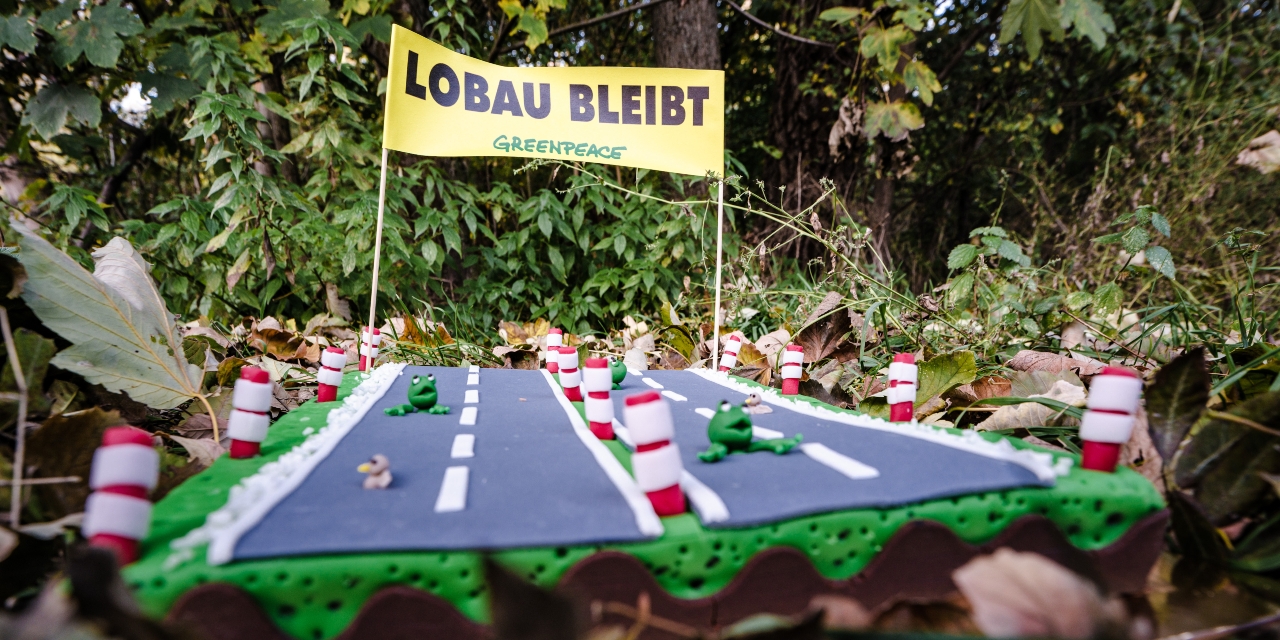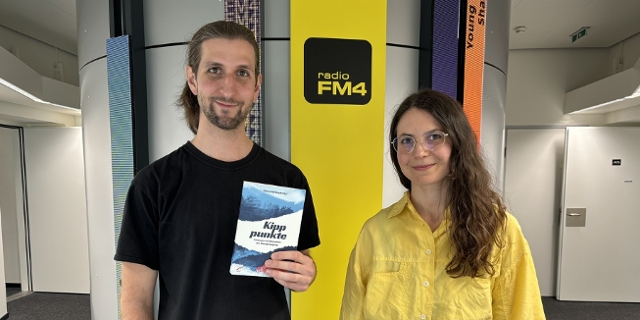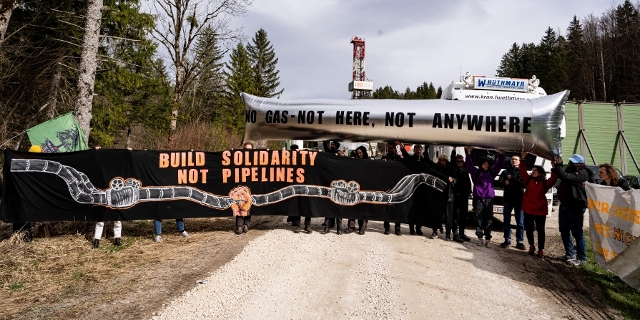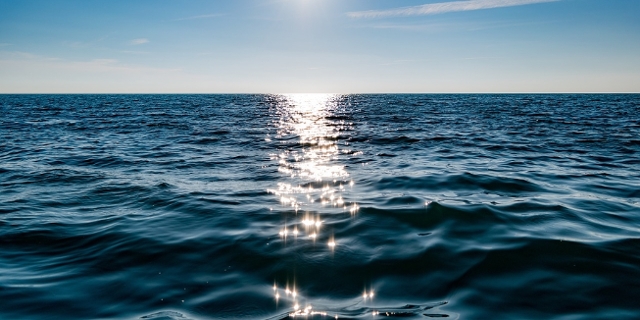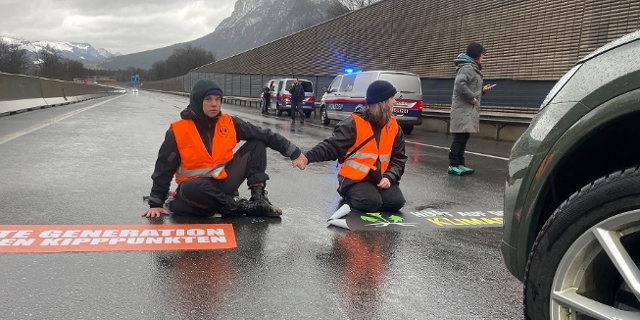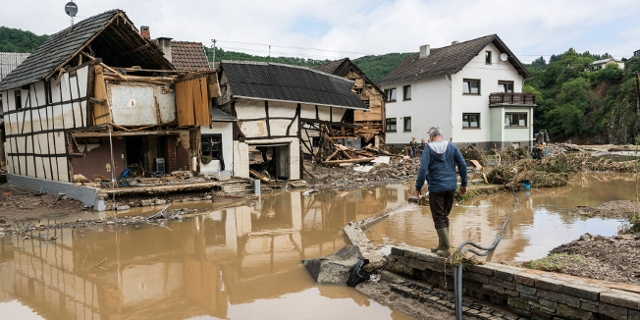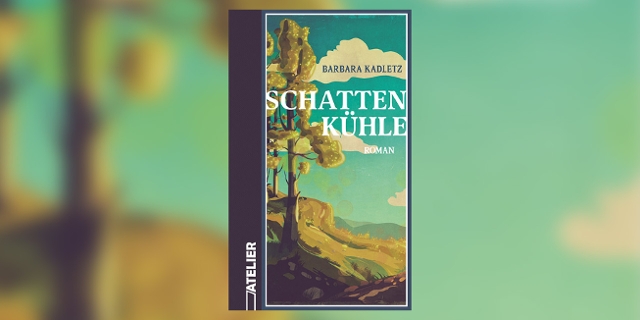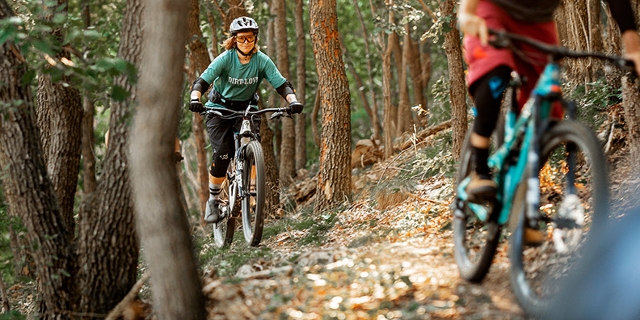Lobautunnel: The Path To Disaster?
It’s a golden autumnal day in the Lobau National Park; the leaves are a kaleidoscope of fading greens, yellows, auburns, reds and golds. There are hikers, wrapped up against the morning cold. The occasional cyclist flits by on the gravel.Otherwise you just hear bird song and the distant rumble of traffic.
This area is a beloved green lung for the Viennese. But, if the city government gets its way, there could soon be a motor tunnel under the ground of this wetland here. Critics say that, as well as the climate implications, this is an unnecessary risk for this biodiversity haven.
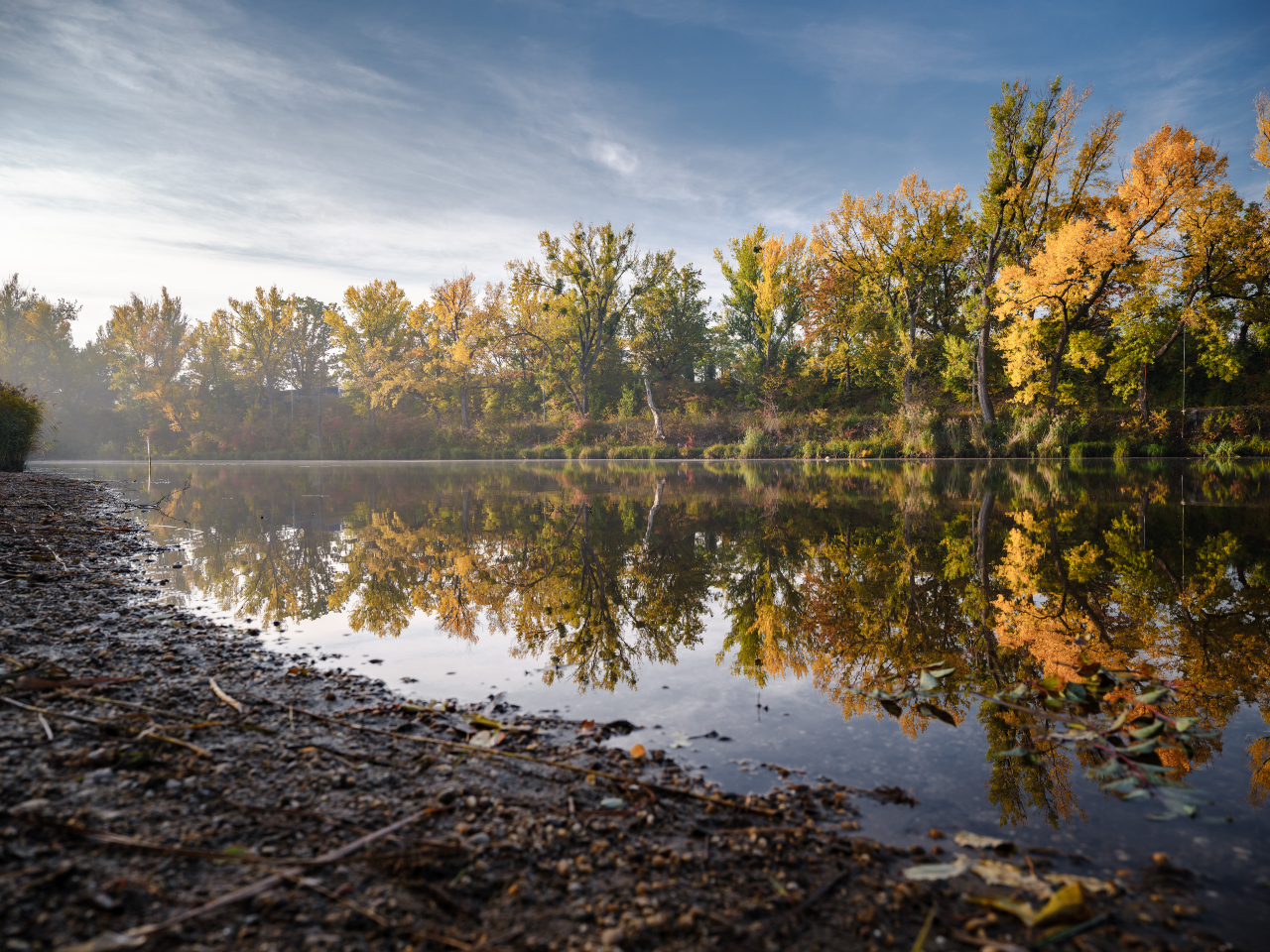
Mitja Kobal/ Greenpeace
Early this summer I spoke to Trevor Sandwith, who leads IUCN’s Global Protected Areas Programme. He warned that any changes in the Lobau would mean his body would have to downgrade the National Park Donauauen’s protected status. He warned any unanticipated complication could ruin the „priceless“ wetlands area for ever and his advice was „better safe than sorry“ when it came to projects that might impact fragile ecosystems.
That’s part of the reason why Greenpeace Austria have unveiled a temporary hiking trail; the „Stadtwanderung13: Der Weg ins Unglück.“ It’s their way of warning a divided public of the risks and, in their view, lack of rewards of this giant road project in an era of climate crisis.
„An Act of Irresponsibility“
The City of Vienna says the tunnel is necessary to reduce traffic jams in the north of the city and make the city more easily accessible for residents of the northern suburbs which anticipate further population growth in the near future. Mayor Michael Ludwig has publically insisted that evaluations of the environmental impact have convinced him that the project will not impact the national park.
But Alexander Egit, the director of Greenpeace Austria, disagrees.
“This project began 20 years ago or so and since then new evidence has been found. There is a big danger related to oil that is still in the ground that could mean toxic materials spread into the national park area if the tunnel is built. These things have not been taken into account, and that is an act of irresponsibility.”
Egit says he doubts the “integrity” of the evaluation system.
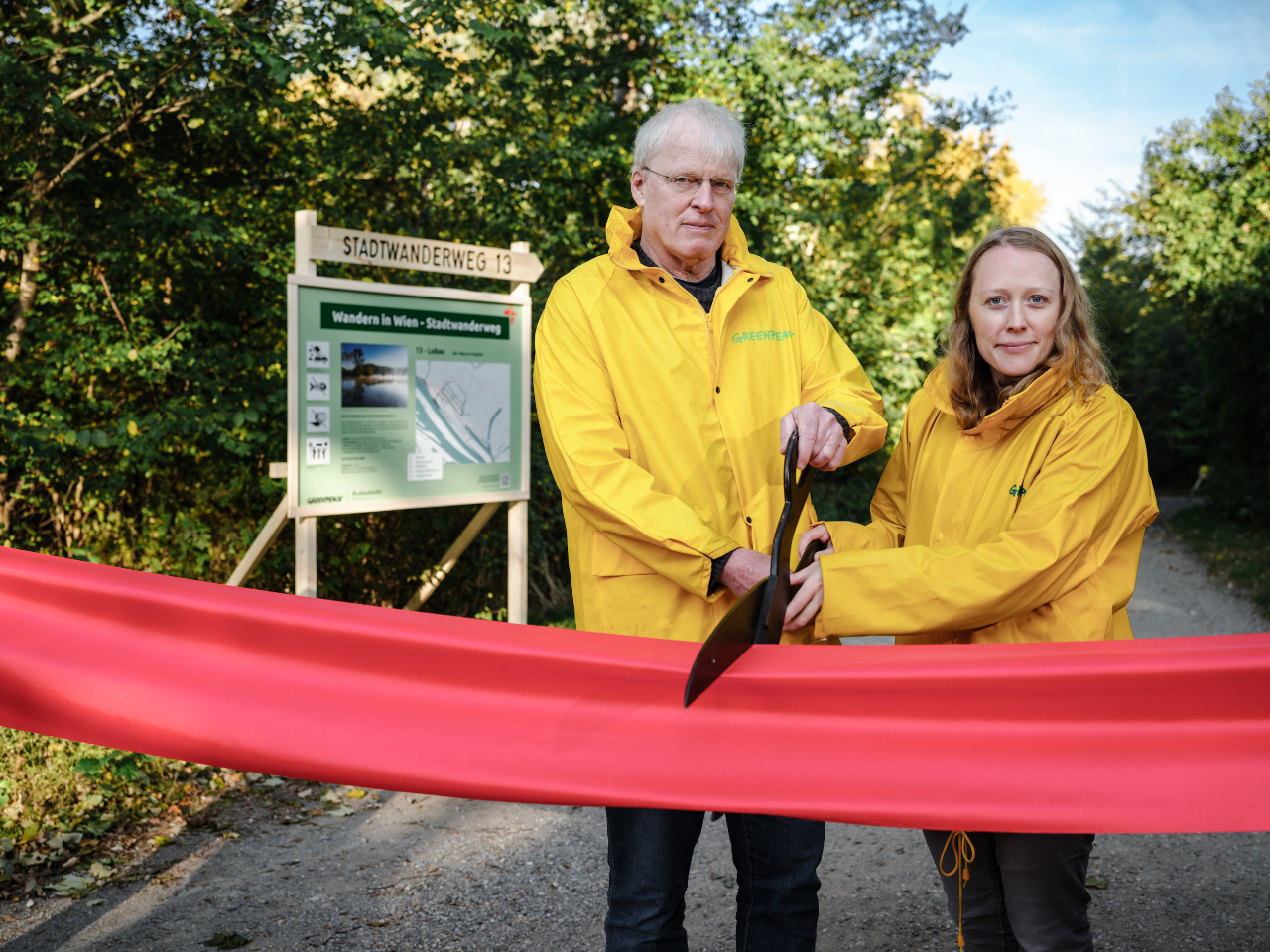
Mitja Kobal
To explain this further, Greenpeace’s Jasmin Duregger takes me to one of the 5 stations of this improvised city hike where the environmental lobbyists have erected a temporary sign. While on my left the sun is spotlighting the glory of autumn, to my right I can see the giant oil containers of the OMV.
Breaking a Safety System?
It was actually, I learn, the Nazis who first located an oil depot here. By 1944 that had attracted the Allied bombers. Those raids spread oil all over the ground.
The toxic chemicals released in those spills were seeping into the groundwater and therefore, due to the natural flow of the groundwater, into the city’s drinking water supplies.
So, after the war, a giant concrete wall was built to ring the oil depot from the surface to 60m under the ground to stop the contaminated area spreading into the National Park.
The problem is, explains Duregger, that the plans for the tunnel would mean smashing through this underground protective wall.
“If we now drill a hole through this concrete wall, there’s a possibility that oil can be leaked again into the area, which is a national park and where a lot of different plants and animals find their homes. And this is a risk we should not take.”
Historical Oil Spills
Human history is everywhere here and it would be disingenuous to claim that this is pristine nature. From this edge of the national park I can hear the rumble of trucks servicing the oil complex and see the vast reservoirs of oil, the concrete bunkers remind us of the legacy of the Second World War that Jasmin and Alexander have mentioned.
And of course the regulation of the Danube, including the city’s beloved Donauinsel, means these wetlands are a fraction as wet as they used to be.
Lessons From History
The bottom line is this: this area has been affected by city development and infrastructure projects for decades, so why does one more project matter. Gertrude Haidvogel is an environmental historian who has joined the hike today:
“I think the lesson of history is that we should think very carefully about the implications of how we intervene in this priceless area.” She says the Lobau, even in its reduced form, “offers rare glimpses into a natural habitat that has almost entirely disappeared.” In other words, the fact that we have already destroyed so much makes the little that is left even more precious.
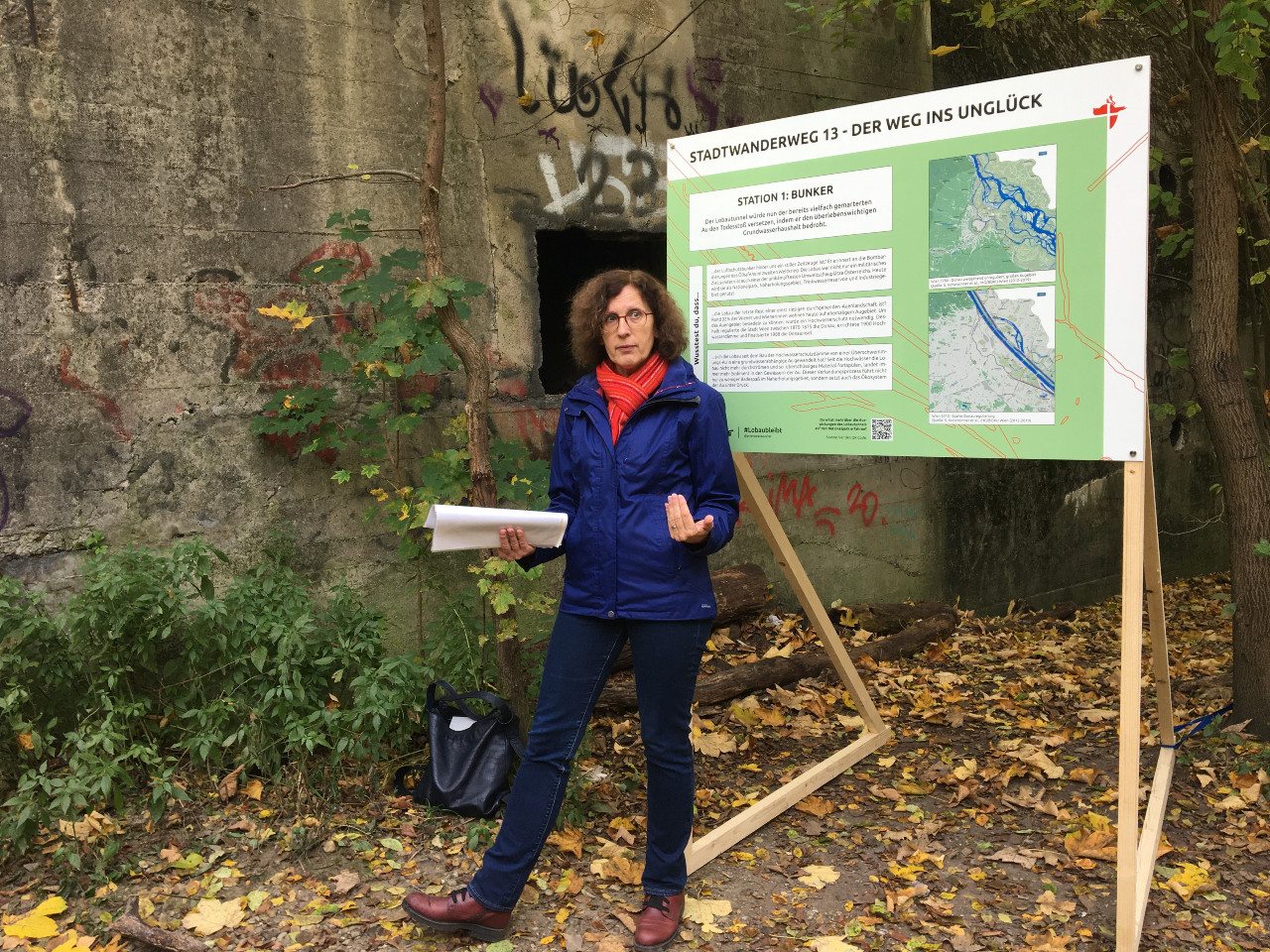
chris cummins
We come to a small lake – the Panozzalacke. I’ve been here in summer to enjoy a bit of lazing around; but Greenpeace’s scientific expert Stefan Stadler says these stretches of water are also important for the city’s water supplies. He fears contamination from the building process or in the future when the concrete shell of the tunnel suffers wear and tear.
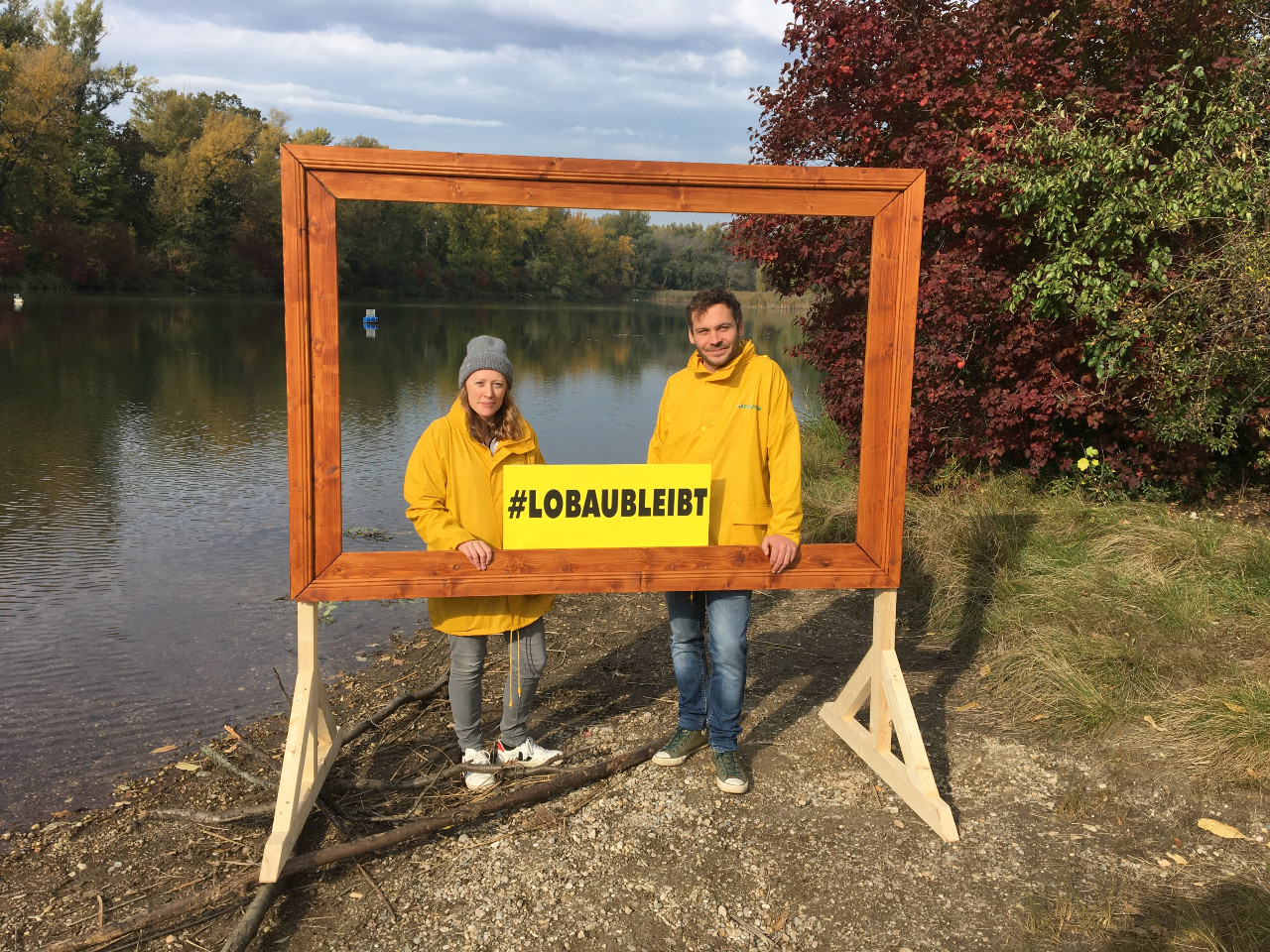
chris cummins
But it’s not, of course, a simple story of the government against the people. There are many people living in Vienna who believe this project will make their lives better. What would Greenpeace Austria director Alexander Egit say to those people?
“We have seen in the past that additional streets actually create additional traffic. The idea that another street is actually beneficial for the people that are living in the area is simply wrong.”
He says the billions of euros that the mega road project would swallow would be better invested in an expansion of public transport and the building of better bike lanes.
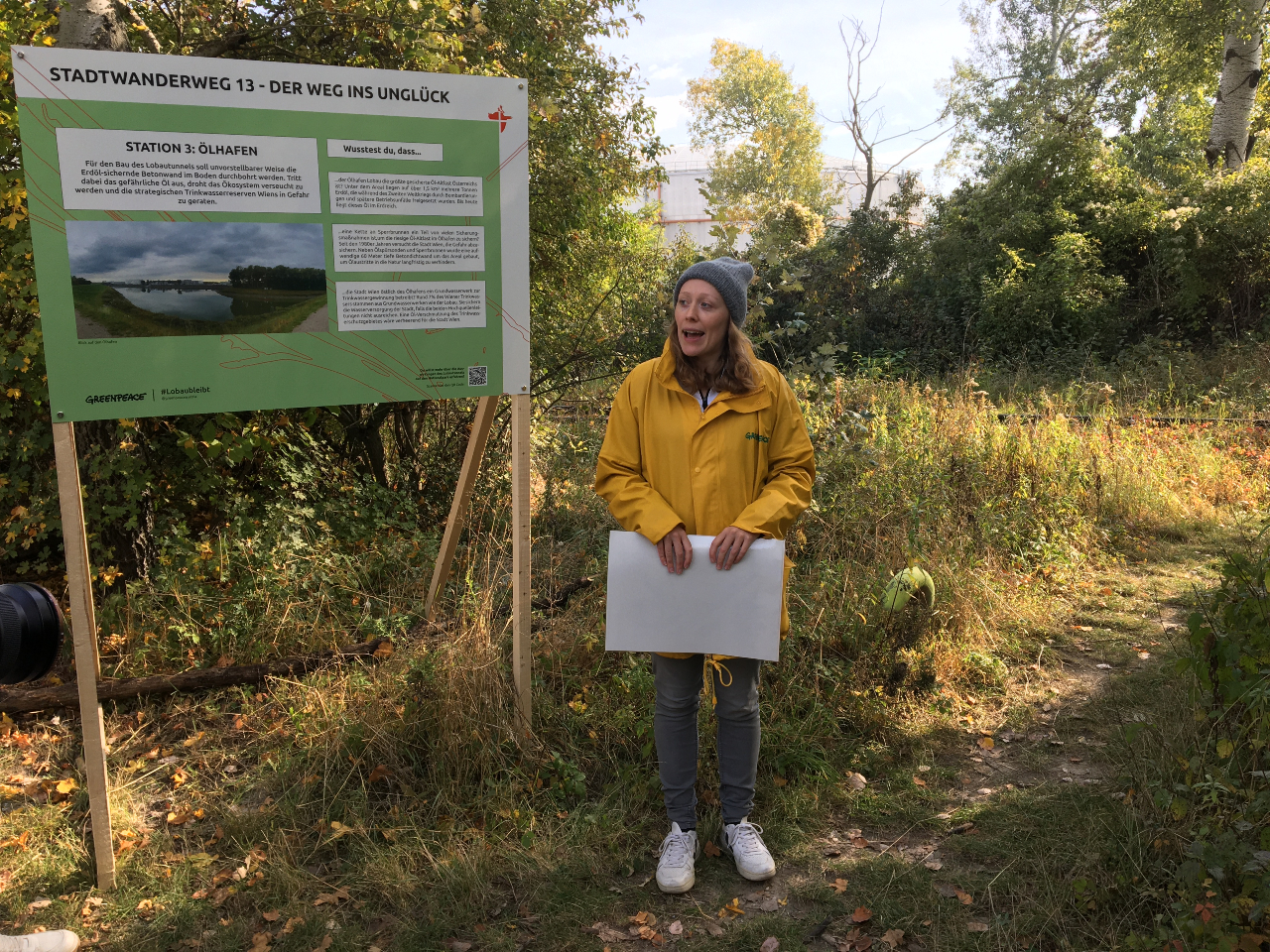
Chris Cummins
Whereas most European Union member states have decreased their carbon emissions since 1990, Austria’s emissions have actually been rising. This is principally during the emissions from traffic.
This means not only that Austria is failing to live up to the pledges it made as part of the European Union delegation in the Paris Agreement, but also that Austrian tax payers faces billions of euros of fines from the European Commission because of its failed climate policy.
“Road emissions have been soaring up,” says Jasmin Duregger. “Building another road is not the way into the future.”
Publiziert am 22.10.2021







